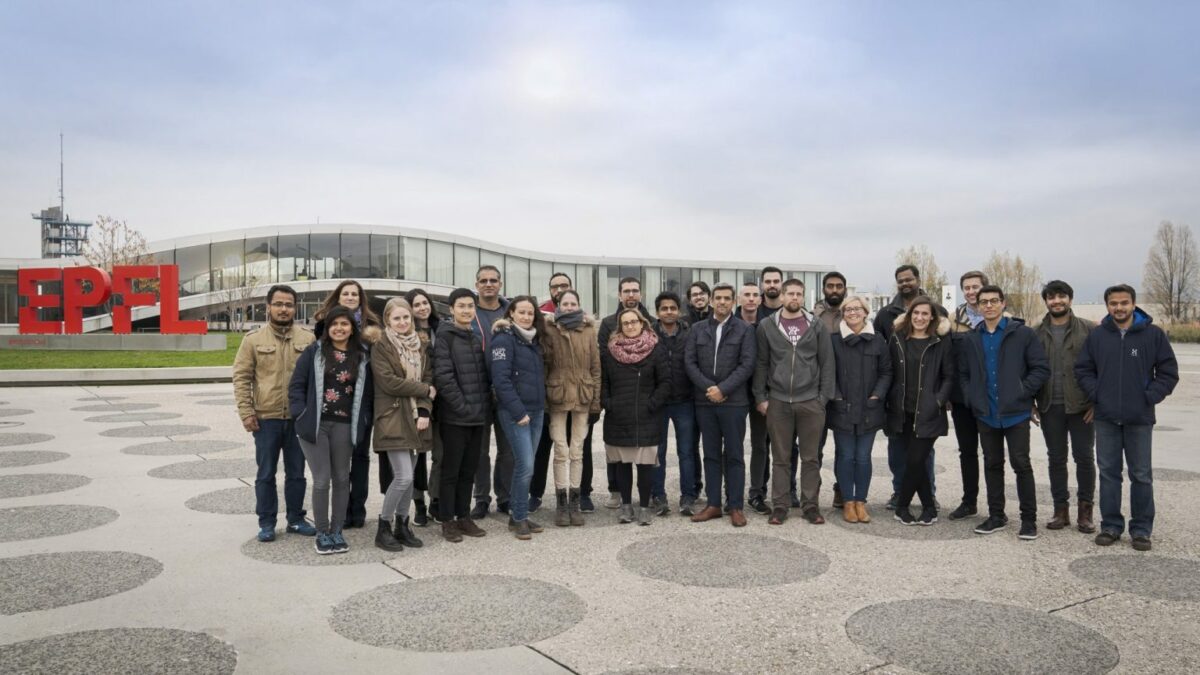Researchers from École Polytechnique Fédérale de Lausanne (EPFL) have made a remarkable advancement in the diagnosis of neurodegenerative disorders (NDDs), including Parkinson’s disease and Alzheimer’s disease, by fusing many cutting-edge technologies into a single system. The study was published in Science Advances. This important technological development has the potential to aid in early NDD detection and monitoring as well as the evaluation of therapy choices at different phases of the disease’s evolution.

Challenges in Neurodegenerative Disorder Diagnosis
The lack of efficient diagnostic techniques for early detection and tracking of disease development makes treating neurodegenerative diseases extremely difficult. A crucial step in the development of the disease has been identified as protein misfolding, a prevalent mechanism in neurodegeneration.
It is hypothesized that healthy proteins initially misfold into oligomers in the early stages of the disease and then into fibrils in the later stages. These misfolded protein aggregates build up as deposits in the brains of deceased NDD patients as well as circulate throughout the brain and biofluids.
But until recently, the creation of techniques to identify these disease-specific biomarkers remained elusive. There are many obstacles in the way of accurate detection, including the inability of existing technologies to precisely separate and measure various protein clumps.
The Study at EPFL
Researchers from Professor Hilal Lashuel’s Laboratory of Molecular Neurobiology and Neuroproteomics (LMNN) and Professor Hatice Altug’s Bionanophotonic Systems Laboratory (BIOS) have combined several scientific disciplines to develop this cutting-edge NDD biomarker sensor, including protein biochemistry, optofluidics, nanotechnology, and artificial intelligence (AI).
The strategy of the researchers was focused on identifying these molecules’ aberrant structures, in contrast to conventional biochemical procedures that depend on assessing the levels of these compounds. The two main aberrant forms implicated in the emergence and evolution of NDDs, oligomers and fibrils, may also be distinguished at different levels thanks to this technique.

Surface-enhanced infrared absorption (SEIRA) spectroscopy is the scientific name of the technique used by the ImmunoSEIRA sensor. Using this technique, researchers can identify and examine particular disease-related chemicals, or biomarkers, linked to neurodegenerative illnesses. The sensor has a special immunoassay that functions as a molecular detective to precisely locate and detect these biomarkers.
ImmunoSERIA sensor
The ImmunoSEIRA sensor is a cutting-edge device with biosensing capabilities that enables the detection and identification of misfolded protein biomarkers linked to NDDs. The study also employs artificial intelligence (AI) by using neural networks to measure the progression and stages of disease.
The ImmunoSEIRA sensor uses gold nanorod arrays coated with antibodies to detect particular proteins. Target biomarkers can be specifically captured in real time, and their structural makeup can be analyzed, from incredibly small quantities. In order to detect the presence of certain misfolded protein types, the oligomeric and fibrillary aggregates, neural networks, a subset of AI algorithms, are then used, achieving an unprecedented level of detection accuracy as the diseases advance.
This represents a significant advancement in the detection of diseases. As the disease development is tightly associated with changes in protein structure, structural biomarkers, particularly when integrated with other biomarkers, could lead to more precise diagnosis and monitoring of disease progression.”
Long-term Outcome
The EPFL research group also demonstrated that the ImmunoSEIRA sensor can be applied in real clinical applications, like analyzing biofluids. Even in complex fluids like human cerebrospinal fluid (CSF), they were able to precisely identify the distinctive hallmark of aberrant fibrils, a crucial diagnostic of neurodegenerative disorders.

The next step with this novel technique is to continue to expand its capabilities and evaluate its diagnostic potential in Parkinson’s disease and the growing number of diseases caused by protein misfolding and aggregation.
The findings of this work represent a substantial advancement in biosensing, infrared spectroscopy, nanophotonics, and biomarkers for neurodegenerative diseases. A significant need for prompt intervention and treatment of neurodegenerative disorders is addressed by the deployment of the AI-aided ImmunoSEIRA sensor for early NDD detection, disease monitoring, and therapeutic efficacy assessment.













